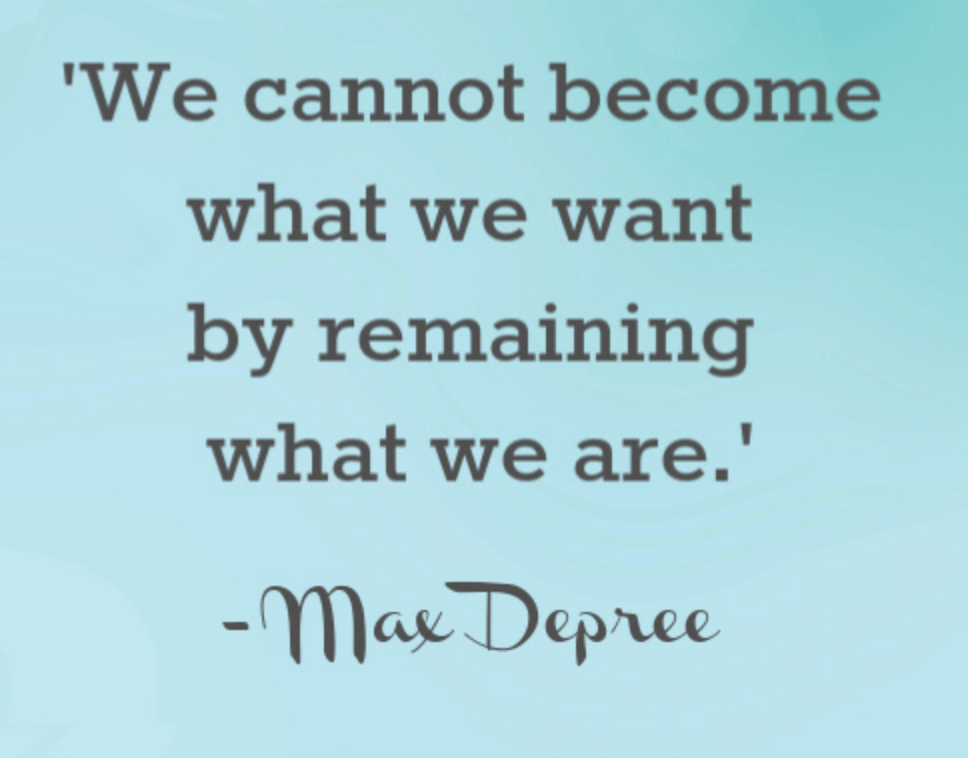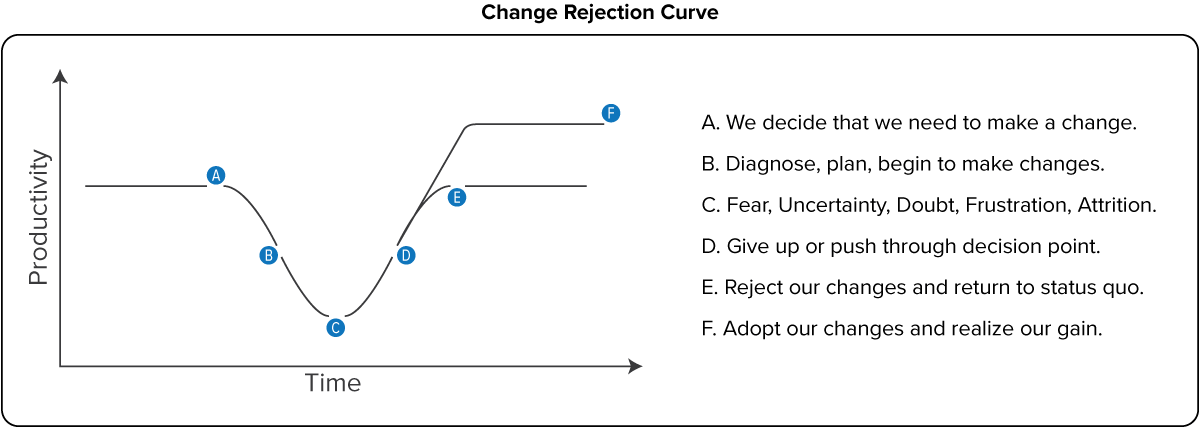The Change Rejection Curve
Chief Marketing Officer • Feb 28, 2022 12:00:00 AM • Written by: Corey Smith

Over the years, I’ve learned two very important lessons about change. First, change can’t be avoided. Second, most people don’t like change.
Change is to be expected… and is necessary.
Do a Google search and you’ll find quotes upon quotes about change. Quotes on how to think about change or quotes on how to process change. You’ll find quotes on making it easier or reasons why it’s so hard. One such example here.
In about 2005, my career shifted to understanding problems in organizations and recommending changes to fix those problems. I learned first hand those two truths mentioned above. As a result, I thought of a concept that I call, the change rejection curve.
The 5 Stages of Grief

While I didn’t know it at the time, I didn’t invent the concept. I have since learned that the concept originated from a model by Elizabeth Kubler-Ross in the 1960s to explain the grieving process.
It makes sense to think of our challenges with change as the process of grieving. We are losing a part of what’s been important to us and we have to process that before moving on to the better. Her model indicates the five stages of grief as:
- Denial
- Anger
- Bargaining
- Depression
- Acceptance
If you do a Google search on the change curve, you’ll see the adoption of the stages of grief into change management. In fact, here’s one such post that I think does a great job on how to use the curve to manage change better.
My Take on the Curve
I was sure that I was brilliant when I came up with this idea that no one was ever considering. I think I just happened to do a great job of assimilating the great ideas of others. But, there is a difference in my version versus all those other versions that can be found.

When I “invented” this idea, I was trying to explain to my clients that if you give up on change before you have pushed through the dip in productivity that you’ll surely endure, then you’ve simply wasted time.
In my version of the change curve, I have a decision point of whether you are going to give up or push through. If you decide to give up, you’ll go back to the status quo and will have wasted time, effort, productivity, money, etc.
Accommodations
I believe that one of the chief reasons change is hard is that first stage in the grieving process. We are in denial that we really have a problem.
If you are trying to affect change in an organization, everyone has their way of doing things. They have created personal accommodations that allow them to be effective in an ineffective environment. They begin to believe that, since they have figured out how to make things work, no organizational change is needed.
Those that have made the best accommodations are often the hardest to convince that change needs to happen. Their attitude often is that of, “Well, if everyone would just do it like I do it, then it would be easy.” They don’t realize that their accommodation works for them because of who they are, not necessarily because it’s the best way to do it.
Affecting the Depth of the Curve
It should be clear that solving real problems takes real time. There are certain things you can do that will impact the time to affect that change. But, the most important concept to understand here is that the faster we try to make a change… particularly when that change is big, the steepness of the curve is significantly increased.
When we collaborate with others on the solution to the problem, especially with those that are meant to make the change, the more shallow the curve is. The converse is true, as well. The more we try to simply push change through without input from others, the more people will resist thus creating a deeper curve.
So, the lesson learned here is that you should collaborate and not expect others to naturally see your solution as the right way to solve the problem. If you are in a position where you can’t collaborate then you have to realize that you might be fighting an uphill battle. There are plenty of legitimate reasons why you might have to push change without collaboration but it will necessitate a whole lot of cheer leading and objection handling.
Of Habits and Ideals
At the bottom of the curve lives fear, uncertainty, doubt, and frustration. This is also where some people will decide that they can’t handle it and you’ll lose partners, employees, and even those who previously were advocates. When the change is really big, i.e. you have bitten off more than you can chew, the habits and comforts of people will be tried and they will move to the decision point of saying "no way Joe See".
When embarking on change, the habits of the past come back to haunt those you are asking to change. Their ideals are being questioned. At the bottom of that curve, they are wondering if the change is really worth it. It’s easier to go back to old habits. It's easier to think that the way it’s always been done is the way it should continue to be done.
Push Through
Change is rejected so very often because people are being told that the way they have done things is wrong. You are, in effect, saying, “You’ve made mistakes and I’m here to tell you how to do it right!!!”
You and I both know that is not what you mean, but that’s how it feels to them. That is why collaboration is so effective in facilitating change. Creating a shallow curve likely means it’s longer to implement the change or it might mean that the change needs to come in smaller steps but if you can help them be a part of it then you can create more meaningful change.
Who knows, you might even get someone to be excited about the change and pat you on the back… but don’t hold your breath.